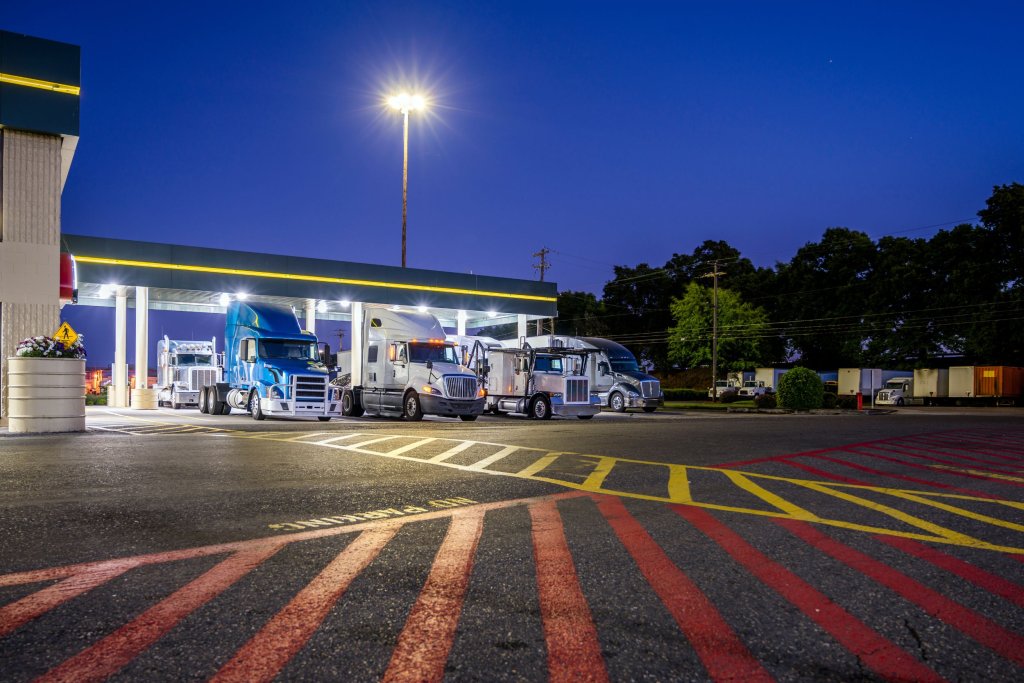
Truck drivers face a unique set of challenges when it comes to planning trips. To be successful, they must carefully consider the best route and ensure that all necessary stops are made in an efficient manner. They also need to manage their time effectively and stay compliant with applicable regulations. This guide provides useful information on trip planning for truck drivers, including tips on route optimization, loading and unloading, fuel efficiency, fuel prices, and more so that they can save time and money while still meeting their goals.
Pre-Trip Inspection for Truck Drivers
A pre-trip inspection is an important part of any truck driver’s trip planning. This is a critical safety measure, as it checks the condition of the vehicle and its components to ensure that it is in proper working order before departing.
The pre-trip inspection should be done every day and includes checking the oil, coolant, brakes, tires, lights, air pressure in the tires, fuel levels, and any other areas that could be worn or damaged. All these components should be checked to ensure they are working properly before the truck is driven. You can then find repairs or replacements from places like tire shops.
Drivers should also check both inside and outside of the cab for any signs of a possible accident or damage. This includes checking for cracked glass, dents, and scratches, as well as any other irregularities that could have occurred during the last trip.
Route Planning and Optimization
The most important aspect of trip planning for a truck driver is route optimization. The best routes are those that minimize the time and fuel needed to complete a trip while still meeting safety regulations and other requirements. When planning a route, drivers should ensure they are aware of any restrictions, such as low clearance bridges or road closures, as well as the locations of rest stops and weigh stations.
Additionally, drivers should factor in the weather and road conditions to their optimized routes to ensure they are taking the safest route for their journey. It is also important to consider any delays that may arise due to traffic or construction. Take things like rush hour and traffic jams into consideration with your truck routes. Working with a trusted partner can help make route optimization easier, ensuring truckers have the best plan possible and avoid the wrong route.
Fuel Efficiency Tips to Save Money and Time

When it comes to trip planning for truck drivers, fuel efficiency is a huge priority! Fuel costs can make up a significant portion of a trucking company or driver’s total expenses, so improving fuel efficiency can have a major impact on their bottom line. Fortunately, there are several tips and measures that drivers and fleets can take to boost their fuel economy.
Reduce Vehicle Weight
One of the most basic ways to save on fuel is to reduce vehicle weight. This means limiting the amount of cargo that is transported at one time and unloading any unnecessary items from the truck’s cab or trailer. Minimizing drag can also help — for example, ensuring that all doors are closed when driving, regularly cleaning and inspecting the truck for any aerodynamic issues, and keeping tires properly inflated.
In addition, drivers should plan their routes carefully in order to reduce idling time. Whenever possible, they should adhere to speed limits, which can help reduce fuel consumption. Taking regular breaks is also important — stopping too often or driving without rest can increase fuel use.
Finally, considering alternative fuel sources can also save money and time. For instance, some truck fleets are now using natural gas or electric power to help reduce fuel costs and emissions. This can help cut down on fuel stops and fuel breaks.
Tips for Planning Truck Stops

Planning truck stops for a long-haul trip can be a daunting task. Having a well-thought-out truck stop plan can make the difference between a successful and an unsuccessful trip. Here are some tips to help you plan stops for the extra miles on your upcoming journey:
- Make sure to research the area ahead of time. This includes the best places to stop for fuel, meal breaks, and rest. Look up local truck stops, rest areas, and driver-friendly restaurants online on google maps or in a guidebook to get an idea of where to go.
- Leave enough time between stops so that you are not rushed when it comes time to stop. You may need extra time between fuel stations and stops if there is traffic or if you need to make a detour.
- Try to choose locations with multiple stops that are safe and restful. Look for truck stops with adequate lighting, secure parking lots, and any other amenities that may be necessary for your comfort and safety.
- Carry a map of the area or use GPS navigation tools so you can easily find your way around. This will help you avoid getting lost and wasting more miles and time.
- Check the weather ahead of time and plan the entire trip accordingly. Inclement weather can cause delays, so it’s important to be prepared for any possibility.
Using a Trip-Planning App

Trip planning for truck drivers is a breeze with the help of a truck driver trip planning app. A great tool to have on hand, trucker trip planner apps can make it easier for you to plan your route and map out every stop along the way.
With helpful features like real-time traffic updates, GPS navigation, and fuel price tracking, you’ll be able to get to your destination quickly and efficiently. You’ll also be able to save time by creating custom routes, setting weather alerts, and optimizing for fuel economy. With all this information at your fingertips, you’ll have no problem planning the perfect trucker trip planners out for your trucking needs!
Creating a Backup plan
When it comes to trip planning as a truck driver, creating a backup plan is essential. This should include details such as the route that will be taken, any planned stops, and the estimated time of arrival at each destination. Backup plans should also include contingencies for medical emergencies and other unexpected events that could cause a delay or disruption in the trip. Planning ahead can help ensure that trips are completed safely and efficiently, so it is important to take the time to make sure your plan covers all potential risks.
By having a backup plan in place, truck drivers can reduce the likelihood of disruption, delays, and other issues during their trips. Additionally, a backup plan may help professional drivers to reduce stress in the event that something unexpected occurs, as it provides an alternative route or options for resolving issues quickly and efficiently.
Ultimately, creating a backup plan is essential for successful trip planning for a truck driver.
Making the Best Possible Trip Plan

Trip planning for a truck driver is an essential part of the job that requires careful consideration and preparation. By following these strategies, such as using efficient routes, using proper ergonomics when lifting cargo, creating a secure loading plan, and having a backup plan in place, you can ensure your trips are successful, and you can navigate your truck routes quickly and free from disruption or delays.
Accidents happen all too often on the road, so it’s important to be prepared with best practices like those outlined here. Taking precautions now will help make sure your trip goes smoothly every time!
